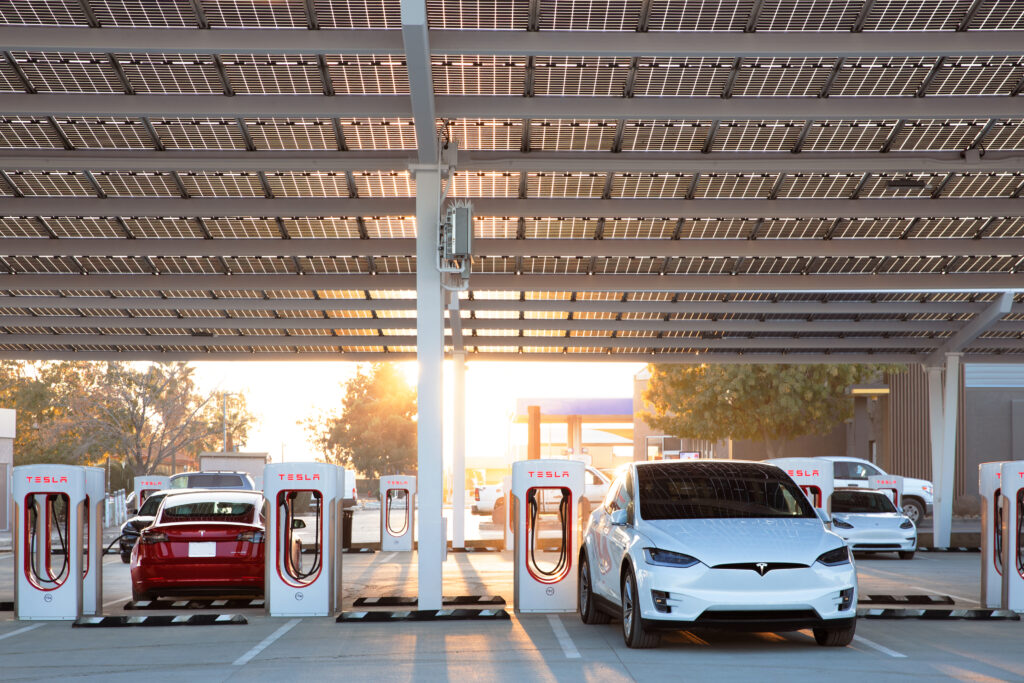
Tesla’s (TSLA) Supercharger network has long been the gold standard for EV charging. Designed exclusively for its vehicles, the network has historically offered seamless, stress-free charging for Tesla owners.
However, the landscape has shifted as Tesla opens up its charging network to non-Tesla EVs. This expansion, while revolutionary, has brought its share of logistical headaches, forcing Tesla to adapt in real-time.
Growing Pains of a Shared Network
The crux of the issue lies in vehicle design. Tesla vehicles have their charging ports conveniently located on the rear-left side, making the original Supercharger cable lengths ideal. Non-Tesla EVs, however, lack this standardization.

Charging ports can appear on the front-right, rear-right, or even along the sides of vehicles. This inconsistency has turned otherwise orderly Supercharger stations into a logistical puzzle, with some drivers blocking multiple stalls just to connect their cars.
Tesla’s decision to open its network to non-Tesla EVs has created an innovative challenge: how to maintain the efficiency and user-friendliness of a network originally designed for uniformity. The company’s solutions address these growing pains in multiple ways, aiming to preserve a smooth experience for all users.
Longer Cables, Smarter Algorithms, and Site Redesigns
Tesla’s first step in solving these issues is the introduction of its V4 Superchargers. Equipped with longer cables, these new stations are designed to accommodate vehicles with charge ports in various locations, eliminating the need for drivers to awkwardly park across multiple stalls.

Tesla plans to install enough V4 Superchargers to outnumber the shorter-cable versions within the next 18 months, significantly improving accessibility for all EVs.
Another major improvement comes from smarter stall availability algorithms. Tesla’s charging software now identifies when a non-Tesla EV blocks additional stalls due to its port location and adjusts the availability data displayed on the in-car navigation system.
By refreshing this information every 15 seconds, Tesla ensures that drivers have real-time, accurate updates about open stalls. This eliminates the frustrating scenario of arriving at a station marked as “available,” only to find blocked spaces.
Beyond technological updates, Tesla has reconfigured over 1,500 Supercharger sites to reduce blocked stalls. The redesigns aim to ensure that no vehicle, regardless of its make or model, requires more than two spaces to charge.

This effort is paired with Tesla’s ongoing campaign to encourage automakers to adopt rear-left or front-right charge port placements, which align seamlessly with its global network of short-cable Superchargers.
Speed Meets Convenience: The V4 Advantage
The V4 Superchargers are not just about accessibility—they also bring significant performance enhancements. These chargers can deliver up to 500 kW of power, dramatically reducing charge times for vehicles equipped with 800-volt architectures.

Tesla’s Cybertruck is currently the only model in its lineup ready to take full advantage of this power, but other high-powered EVs from different automakers can also benefit. Faster charging means shorter stall occupancy times, which improves overall availability at busy stations.
Turning Range Anxiety into Range Confidence
Tesla’s head of North American Charging, Max de Zegher, summarized the company’s mission as transforming “range anxiety into range confidence.” This vision drives Tesla’s efforts to refine mapping accuracy, accelerate stall availability updates, and optimize station layouts.

These improvements ensure that whether you drive a Tesla or another EV brand, charging is seamless, reliable, and stress-free.
Charge Complete: A More Inclusive Future
The Supercharger network, once exclusive to Tesla owners, is rapidly evolving to accommodate a growing and diverse EV market. Tesla’s commitment to longer cables, smarter algorithms, and redesigned stations reflects its willingness to adapt and innovate.

These changes address the immediate challenges posed by opening the network while setting the foundation for a more inclusive, efficient, and accessible charging ecosystem.
With the rollout of V4 Superchargers and continuous updates, Tesla is turning logistical headaches into a smooth, integrated experience for all EV drivers. The future of EV charging is here, and it’s smarter, faster, and more inclusive than ever.




